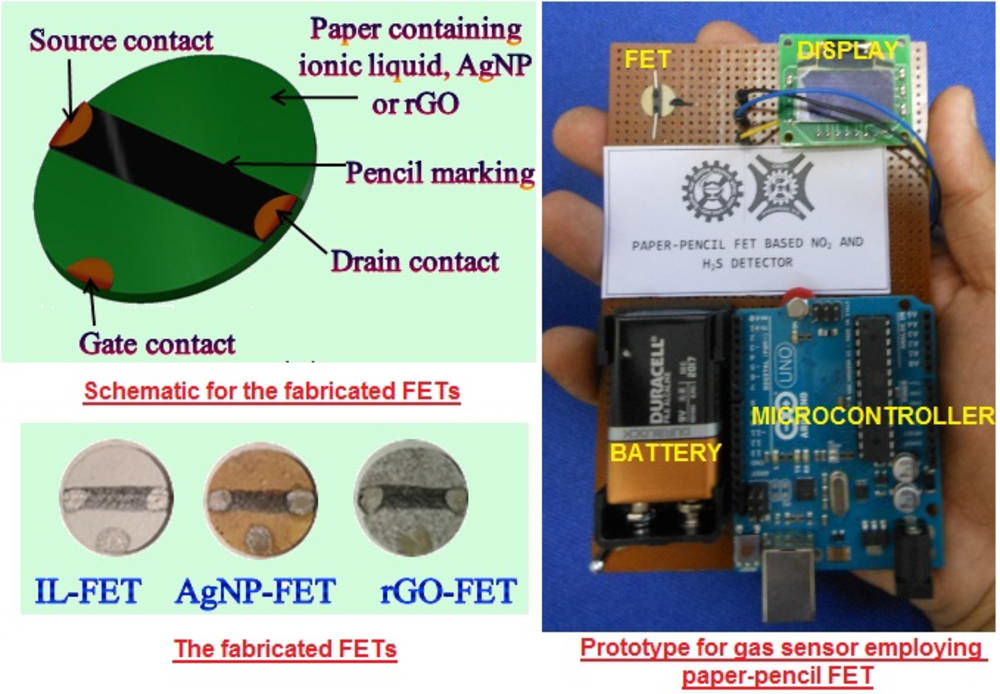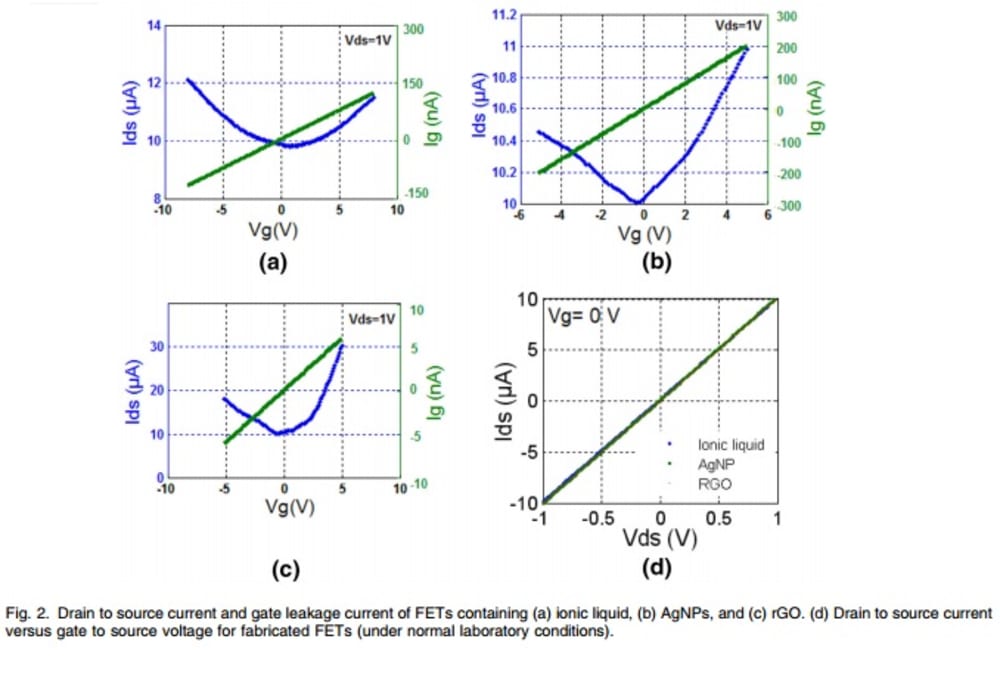Flexible field effect transistors (FET) reported till date contains polymers like PDMS (Poly-dimethyl siloxane) or PS (Polystyrene) as substrate or gate material. This possess serious limitations in terms of their fabrication procedure, repeatability, bio-degradability, bending and long-term aging response. In this work, we have conducted one pot fabrication of solution processed FET on paper substrate without use of any additional polymer for substrate or gate dielectric for the first ever time. Filter paper with adsorbed ionic liquid (1-butyl-3-methyimidazolium octylsulphate), silver nanoparticles (AgNP) and reduced graphene oxide (rGO) were used as substrate as well as the gate material for three different fabricated FETs. Pencil markings on these substrates acted as the channel for fabricated FETs. Metallic silver paint painted on the specific region acts as the source drain and the gate electrodes for the fabricated FETs. Fig 1 shows the fabricated FETs.
The FET characteristics in ionic liquid based FET is due to formation to EDL (electric double layer) in paper adsorbed with ionic liquid acting as the gate material. For the AgNP FET, profuse number of charge carriers surrounding the individual nanoparticles in presence of environmental humidity generates a charge pool, which gets polarized on application of electric current. Thus renders AgNP soaked paper as a good gate dielectric material. In rGO based FET the layers of rGO present in the paper as gate material generates a polarizable dielectric due to delocalization of electrons from the graphitic domain. Fig 2 shows FET characteristics.
As a proof of the concept to demonstrate the utility of these flexible FETs, a first generation prototype (Fig 1) housing the AgNP FET along with standalone instrumentation system was developed to detect hydrogen sulphide (H2S) and nitrogen dioxide (NO2) gas. A simple concept was used to detect these two gases using a single AgNP based FET as a sensor. The AgNP based FET has silver nanoparticles as gate dopant whereas the channel material is graphite layers. AgNP has affinity towards hydrogen sulphide whereas graphene (single layer of graphite) has affinity towards nitrogen dioxide gas. Variations of the drain to source voltage with varying gate voltage away from normal characteristics thus signify presence of hydrogen sulphide gas whereas variations of the resistance of the channel only shows the presence of nitrogen dioxide gas. A complete device housing the AgNP based paper-pencil FET, microcontroller and display was fabricated. It was found that the system could detect the gases individually with good fidelity. Detection of these industrial gases opens up possibilities towards the use of paper-pencil based FETs in industrial gas detection devices. Further more most of the commercial gas sensing devices needs preheating for gas detection with specific detection time whereas for these simple devices no preheating is needed and no time lag in detection is observed.
Preliminary work recently published by us-
S. Mandal et al,, Silver nanoparticles in comparison with ionic liquid and rGO as gate dopants for paper pencil based field effect transistors, Journal of electronic materials, Springer, 44(1), 2015, 6-12.
Like this entry?
-
About the Entrant
- Name:Soumen Mandal
- Type of entry:individual
- Patent status:pending





